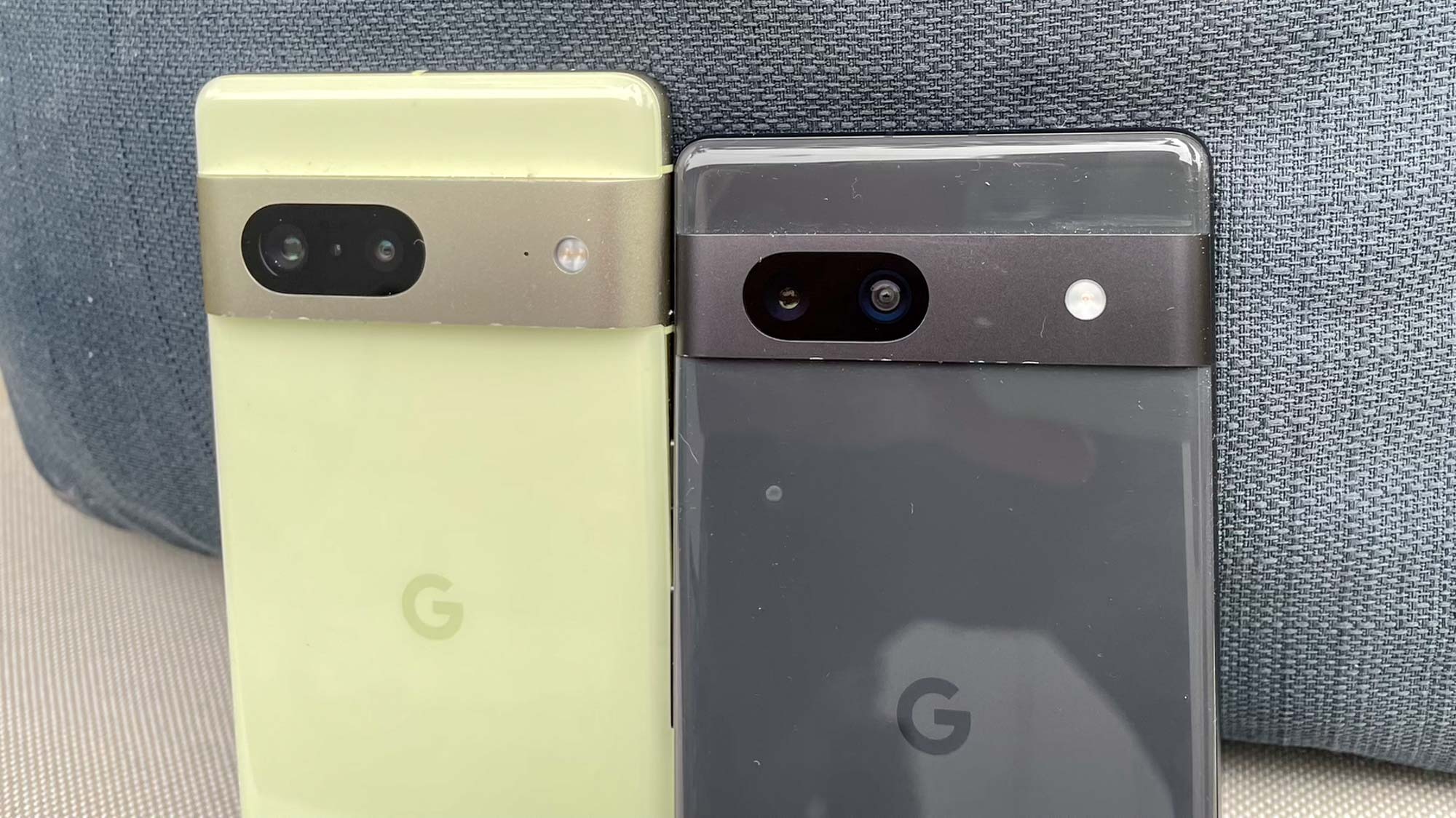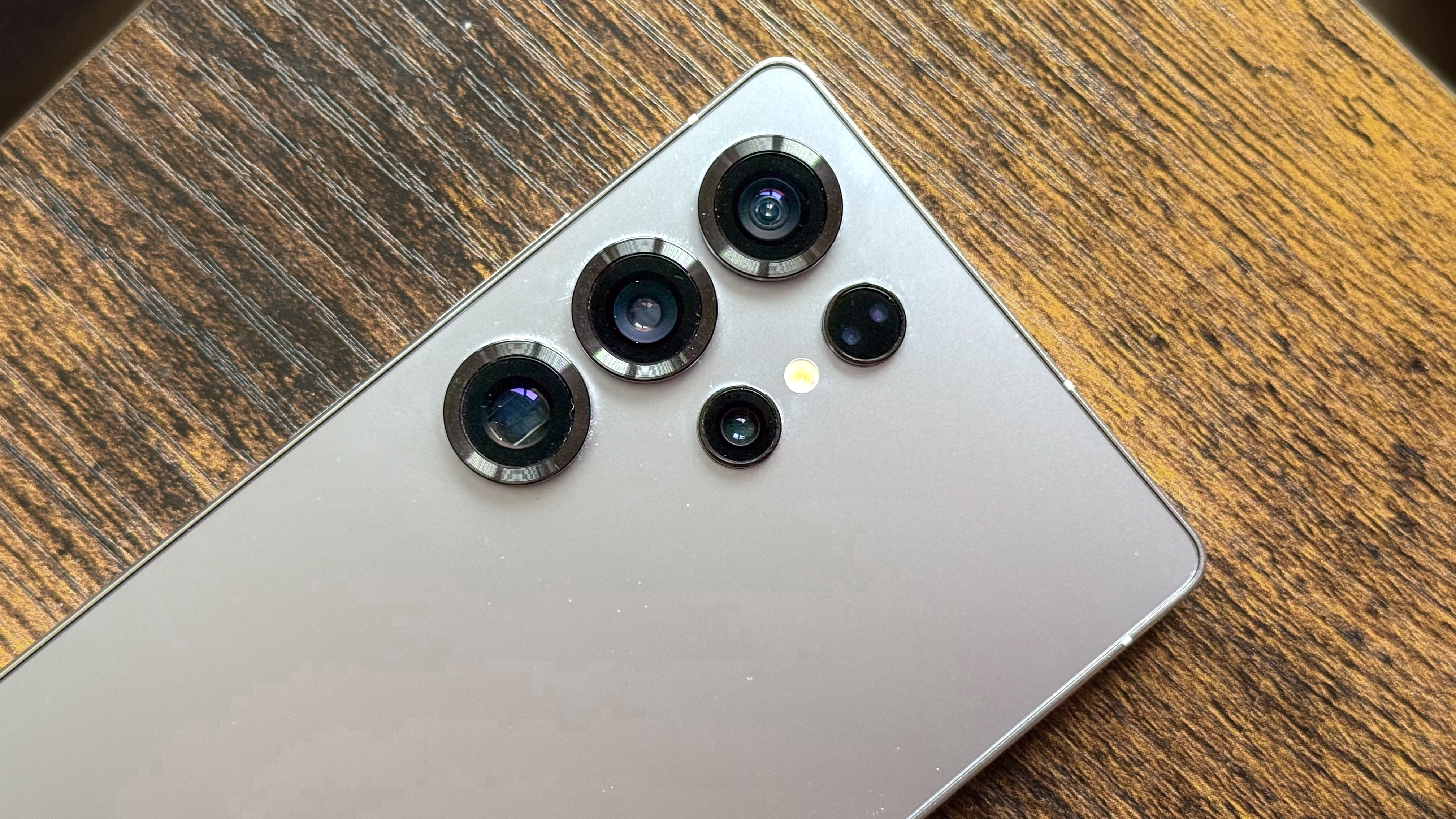Google Pixel 7a vs. Pixel 7 camera face-off: Can the cheaper Pixel beat the flagship?
We compare photos shot by the $499 Pixel 7a and $599 Pixel 7

A Google Pixel 7a vs. Pixel 7 camera face-off will go a long way toward determining which Google phone is right for you. After all, the phones already share so much in common — they have the same processor, the same 90Hz refresh rate and the same look — that image quality could be the deciding factor in your next phone purchase.
More specifically, looking at photos taken by both Pixel phones side by side can determine if you're giving up anything by opting for the cheaper Pixel 7a. As we found out in our Pixel 7a review, Google's $499 handset emerges as the best camera phone for less than $500. If those pictures can match or even exceed what the Pixel 7 can produce, there's little reason to spend the extra $100 for Google's $599 entry-level flagship.
Because we have both Pixels on hand, we're in a unique position to conduct a Google Pixel 7a vs. Pixel 7 camera comparison. Here's what we discovered when we took out both phones and put them through their paces. (For a look at all the differences between Google's phones beyond camera output, check out our Pixel 7a vs. Pixel 7 comparison.)
Google Pixel 7a vs. Pixel 7 camera face-off: Hardware
Before we look at the results, let's compare what kind of hardware each Pixel brings to the table. The Pixel 7 introduced last year offers the same setup as the Pixel 6 before it. That means a 50MP main camera augmented by a 12MP main lens. The front camera on the Pixel 7 saw an upgrade from its predecessor, with Google opting for a 10.8MP selfie cam that delivers a 92.8-degree field of view.
The Pixel 7a saw a serious upgrade from previous Pixel A series phones, replacing the standard 12MP main camera with a 64MP sensor. The ultrawide camera lens uses a 13MP sensor, and that's also the megapixel rating on the front camera. That 13MP selfie cam features a 95-degree field of view.
| Google Pixel 7a | Google Pixel 7 | |
| Main camera | 64 MP (f/1.89), 1/1.73" image sensor size | 50MP (f/1.85), 1/1.31" image sensor size |
| Ultrawide camera | 13MP (f/2.2), 120 degree field of view | 12MP (f/2.2), 114 degree field of view |
| Front camera | 13MP (f/2.2), 95 degree field of view | 10.8 (f/2.2), 92.8 degree field of view |
Neither Pixel 7 nor the Pixel 7a feature a dedicated telephoto lens, something you'll only find on the Pixel 7 Pro. Instead, the two phones rely on Google's Super Res Zoom feature, with both capable of an 8x digital zoom.
Google Pixel 7a vs. Pixel 7 camera face-off: Outdoor shots
Roses, outdoor
In what's going to be a recurring theme in the this Pixel 7a vs. Pixel 7 camera face-off, there's not a lot to distinguish this shot of some pinkish white roses captured by both phones. Lighting, balance and composition are more or less identical, and both phones have captured pretty pleasing shots.
The Pixel 7 highlights the pink in the rose petals just a little bit more than the Pixel 7a does, which makes the flowers look a bit brighter in the Pixel 7a shot. I personally prefer that brightness to the wider range of color in the Pixel 7 photo, but your preference may vary.
Fruit stand, outdoor
The differences are even harder to spot at this fruit stand, where the pineapples and mangoes are identical in color and consistency. If you want to pick out a minor difference, the oranges in the background of the shot are slightly more in focus in the Pixel 7a photo — and really just in the back row looking straight back from the right side of the pineapple display. But it's not as if your eye is drawn to that area of the shot, and unless you were looking for inconsistencies, you probably wouldn't notice a thing.
Street corner, ultrawide
A switch to the ultrawide lens on both Pixels turns up no discernible differences between the two photos. Each Pixel gets a rich blue sky, and the brickwork on the church across the street is just as detailed in the Pixel 7a shot as it is in the Pixel 7's effort. Both phones even manage to lose a stoplight on the left side of the photo in a cluster of trees — the only reason it's easier to spot in the Pixel 7 shot is that the light turned green the instant I tapped the shutter button.
2x zoom, outside
Perhaps the biggest differences between the two camera phones emerged when I put the digital zoom to work by shooting a theater marquee from across the street. (I used 2x zoom instead of the maximum 8x, as I've found the higher you push the zoom, the more likely you are to wind up with noise and graininess in the Pixels' output.) I think the text on the main theater marquee is a bit sharper in the Pixel 7's shot. You can also read more of the signage underneath the overhang in the Pixel 7's zoom, as that detail gets lost in shadow with the Pixel 7a. That said, I think the theater facade looks a bit richer in the Pixel 7a shot, which has a warmer tone than the the Pixel 7 image.
Google Pixel 7a vs. Pixel 7 camera faceoff: Indoor shots
Taco plate, evening
Moving indoors, these shots of a couple of tacos taken in the evening could have come from either phone. The colors on the meat, toppings and salsas are the same in either shot. Even the glare off the lefthand side of the plate from the overhead lights is identical.
Steak and eggs, morning
Same table, but a different meal at a different time of day, and here's when some differences creep into the two photos, as the camera phones deal with a different shade of ambient lighting from a nearby window. The Pixel 7 has gone too cool with its rendition — the strawberry jam on the biscuits is muted rather than bright, and the surface of both the steak and eggs looks very dull.
It's the glass of orange juice in the background that tells the tale for me. It's vibrant in the Pixel 7a shot, just like the rest of the colors in that photo. The Pixel 7 once again offers a more muted color that doesn't even appear to be orange.
Cat, indoors
My cat took some time out from escaping our house to pose for a photo, and we once again get an interesting contrast from the two Pixel phones. The Pixel 7's shot is brighter and more colorful — the cooler tone really calls out the orange spots on his fur. The focus and contrast is sharper in the Pixel 7a photo, though, with Google's cheaper phone depicting a much truer white. I prefer the Pixel 7 shot, but either would be acceptable.
Google Pixel 7a vs. Pixel 7 camera faceoff: Special modes
Night mode, mural
There are some similarities between the two shots of a mural — it's hard to tell where the building ends and the night sky begins in both the Pixel 7 and Pixel 7a photos. The colors are similar, too, though the Pixel 7 has more of a yellow cast thanks to a nearby street light.
The big difference comes in the sharpness of the image — when you zoom in, the contours of the little girl's face are better defined in the Pixel 7a photo. That makes it a slightly better option than the Pixel 7 even if the 7a struggles more with glare off the right side of the building in its effort.
Portrait mode
If you can find major differences in these not-so-dueling portrait shots of my daughter, you've got a sharper eye than me. Both the Pixel 7 and Pixel 7a photos showcase similar colors (accurate), skin tones (overly smoothed, with my daughter's freckles buffed out of existence) and background blur (effective in both cases).
Selfie
Those similarities extend when you move to the front cameras on the respective Pixels, for good and for ill. Both phones have removed any hint of blemishes from my skin, and both pick out the few remaining bits of brown and red in my beard. I feel that the Pixel 7 has a slightly more natural tone to my skin color, as the Pixel 7a over-emphasizes any pinkness. The bricks behind me look darker in the Pixel 7 shot, too, in a very pleasing way.
Google Pixel 7a vs. Pixel 7 camera face-off: Verdict
I didn't expect to see many differences in the Pixel 7 and Pixel 7a photos when I set out to capture these images. For one, the hardware specs on both phones are fairly similar, and for another, both benefit from the Tensor G2 chipset and whatever computational photography capabilities it brings to the table.
And for the most part, the photos lived up to my expectations, with little separating images shot by the two Pixels. Of the 10 photos featured here, the Pixel 7 had my favorite photo in three instances — mostly in cases where the slightly larger aperture on the main camera was able to let in more light for a more detailed shot. (I also preferred the self-portrait captured by the Pixel 7.) In four other instances, I would have given the edge to the Pixel 7a, and the remaining four shots were dead heats, as far as I'm concerned.
To my mind, that's a pretty compelling argument for the Pixel 7a over the Pixel 7. The more expensive flagship doesn't take noticeably better photos — in some instances, you would have to argue that the Pixel 7a is better suited to task at hand. Certainly, there's not $100 worth of difference between these two camera phones, so unless you really prefer the Pixel 7's more polished materials, the Pixel 7a is the camera phone to get.
More from Tom's Guide
Sign up to get the BEST of Tom's Guide direct to your inbox.
Get instant access to breaking news, the hottest reviews, great deals and helpful tips.
Philip Michaels is a Managing Editor at Tom's Guide. He's been covering personal technology since 1999 and was in the building when Steve Jobs showed off the iPhone for the first time. He's been evaluating smartphones since that first iPhone debuted in 2007, and he's been following phone carriers and smartphone plans since 2015. He has strong opinions about Apple, the Oakland Athletics, old movies and proper butchery techniques. Follow him at @PhilipMichaels.

